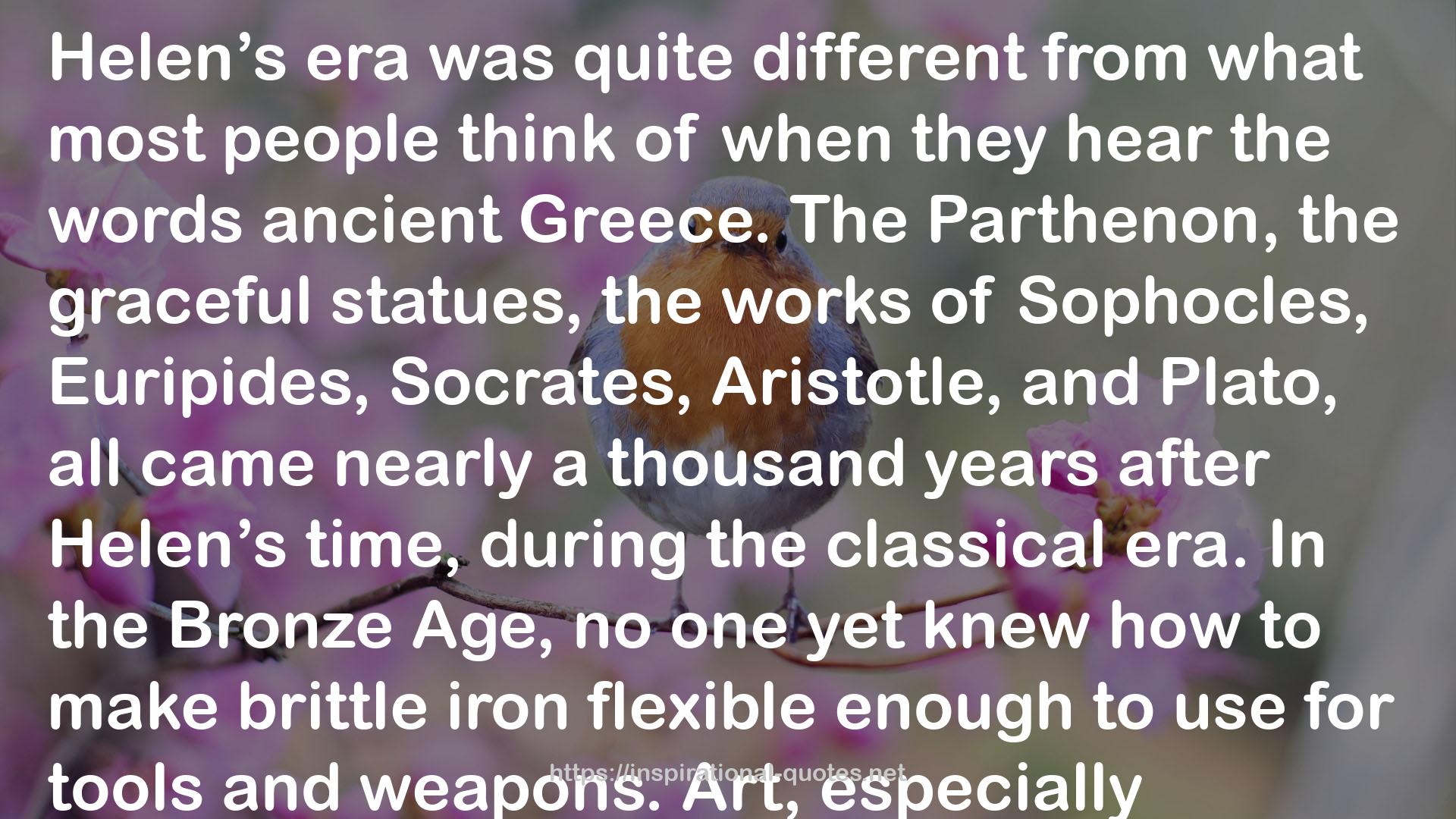" Helen’s era was quite different from what most people think of when they hear the words ancient Greece. The Parthenon, the graceful statues, the works of Sophocles, Euripides, Socrates, Aristotle, and Plato, all came nearly a thousand years after Helen’s time, during the classical era. In the Bronze Age, no one yet knew how to make brittle iron flexible enough to use for tools and weapons. Art, especially sculpture of the human form, was stiffer and more stylized. Few people could read or write. Instead of signing important papers, you would use a stone seal to leave an impression on clay tablets. The design on the seal would be as unique as a signature. There was a kind of writing in Bronze Age Greece, but it was mostly used to keep track of financial matters, such as royal tax records. Messages, poems, songs, and stories were not written down but were memorized and passed along by word of mouth. "
― Esther M. Friesner , Nobody's Princess (Nobody's Princess, #1)
